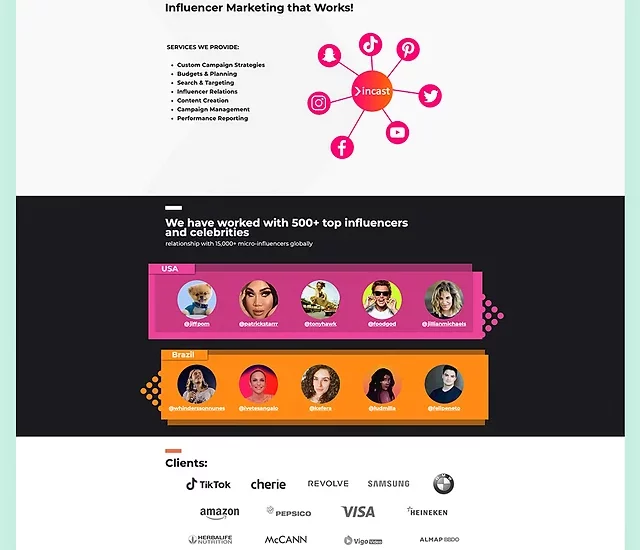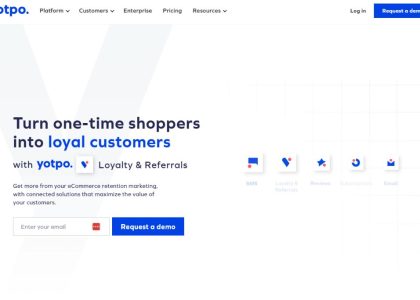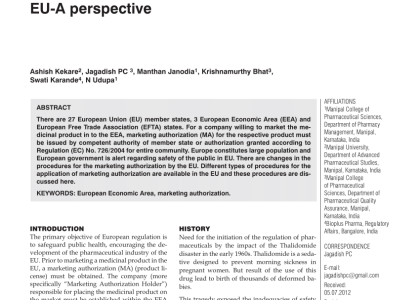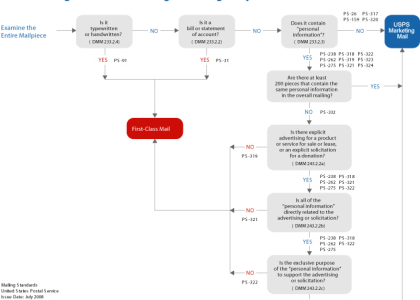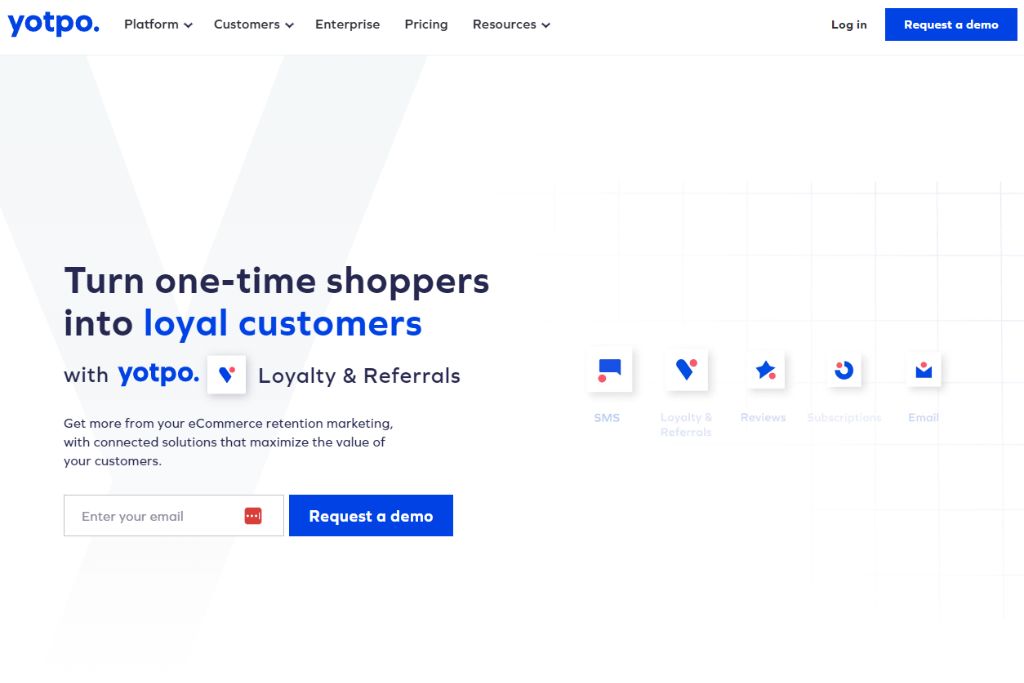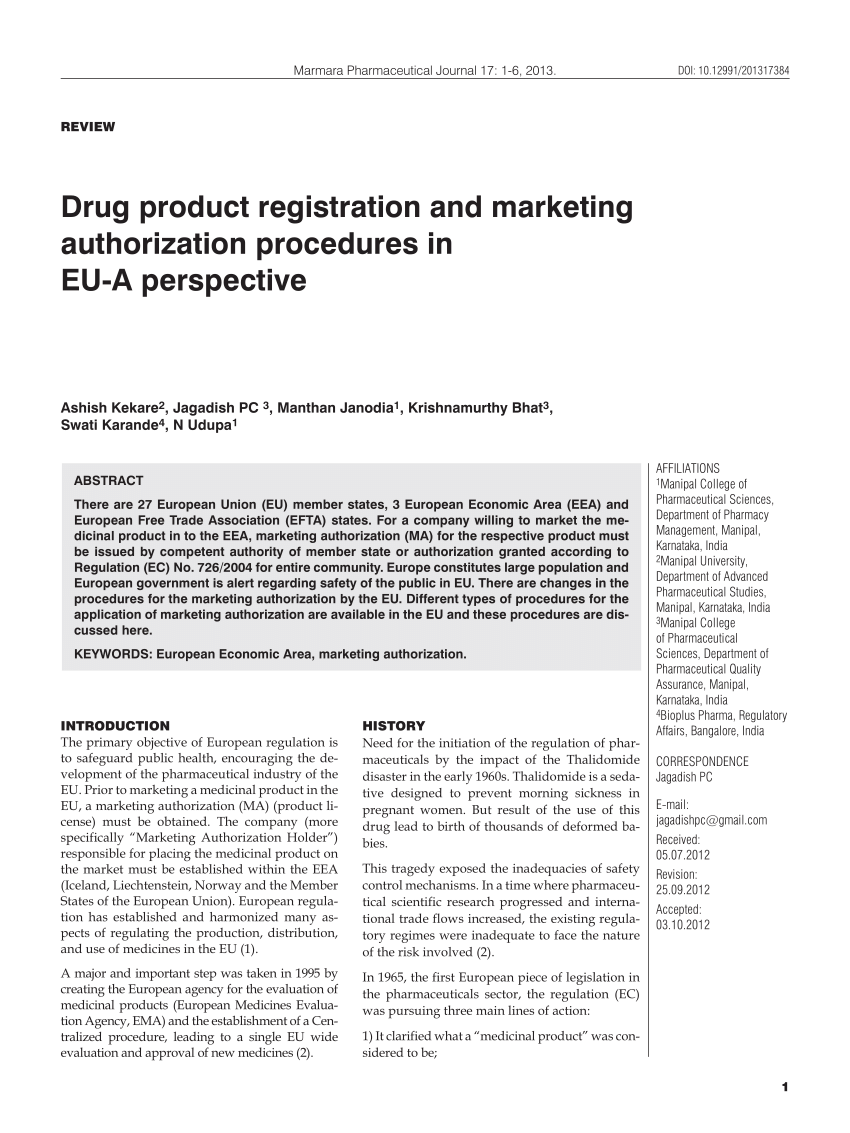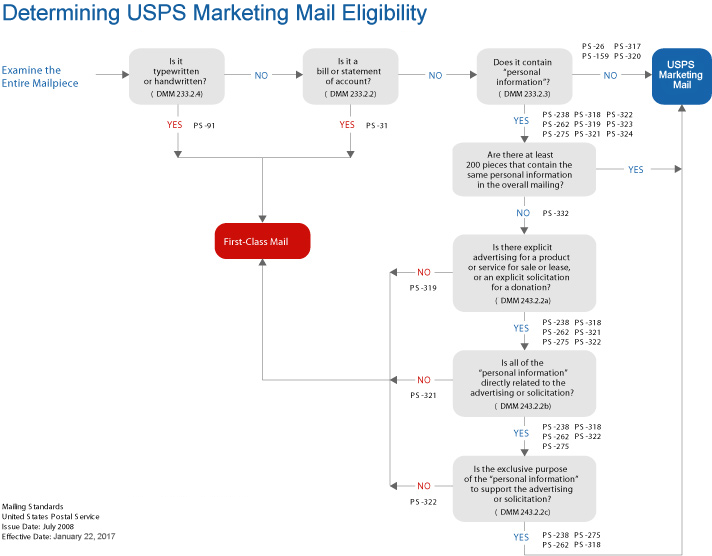In the fast-paced world of marketing, a professional portfolio is more than just a collection of your work— it’s a representation of your skills, dedication, and uniqueness as a marketer. As such, it’s crucial that you take the time not just to assemble it, but to carefully curate and present your best work. This task might seem daunting, especially if you’re just starting your journey in the marketing industry. But don’t worry, we’ve got you covered.
Our comprehensive guide will take you step by step through the process of assembling a marketing portfolio that is sure to make a lasting impression. Whether you’re a seasoned professional or a fresh marketing graduate, you’ll find valuable insights to help you showcase your capabilities and get your talents noticed in a highly competitive market.
From selecting your most impressive projects to effectively presenting your success metrics, we have compiled the ultimate tips and tricks to help you build your brand and improve your professional standing. This guide will show you how to create a marketing portfolio that truly sets you apart.
Grasping the Significance of a Portfolio in Marketing
A well-crafted portfolio in marketing is a potent tool that functions as a visual resume, showcasing your capabilities, skills, and achievements in the marketing field. Let’s delve into understanding why it holds such paramount importance.
Representing Your Marketing abilities
A marketing portfolio is a crystal clear representation of your marketing abilities. The quality, creativity, and efficiency of your work can be judged based on the collection of samples presented in your portfolio. It is a platform that allows prospects to evaluate how efficiently you can deliver results.
A notable feature of a marketing portfolio is that it can be updated dynamically. You can frequently add your latest works, letting your potential employers witness how your skills have been evolving and improving over time.
Highlighting Your Unique Selling Proposition (USP)
Moreover, your marketing portfolio enables you to put forth your USP. In the cluttered market space, your portfolio allows you to stand out by showing what makes your work unique and different from others. You can showcase your exclusive marketing strategies, innovative solutions, and unique creative executions that have yielded successful results.
Proving Your Track Record
Most importantly, a marketing portfolio furnishes persuasive evidence of your successful track record. It demonstrates how your marketing efforts have contributed to the growth and success of different brands or campaigns. In this tangible manner, it adds a lot of credibility to your claims, thereby making you a trustworthy professional in the eyes of potential employers or clients.
Recapitulating Your Achievements
Lastly, a portfolio acts as a comprehensive compilation of your significant achievements in your marketing career. It is a proud record of your accomplishments, highlighting your mastery over different areas of marketing.
To sum up, acknowledging the critical role of a marketing portfolio is the first step towards building a noteworthy portfolio that reflects your professional identity and persuades potential employers about your capabilities.
Determining Your Strengths and Capabilities in Marketing
Finding out your strengths and capabilities in marketing is a crucial step towards creating a compelling portfolio. It helps you to understand what kind of marketing campaigns you excel in. It also helps in identifying which areas you need to improve.
Self-Assessment
Begin by evaluating yourself. Reflect on your past marketing projects without any bias. A thorough self-assessment can reveal your true strengths and areas of improvement. Take into consideration your creative, strategic and analytical skills.
Highlight the specific skills that made your marketing projects successful. Was it your knack for capturing your audience’s attention with gripping content? Or was it your strategic use of data to align your marketing strategy with your target demographic’s preferences?
You might also want to seek external opinions. Feedback from colleagues, mentors, and clients can provide a broader perspective on your marketing skills and strengths. Remember, constructive criticism can be quite beneficial, as it enables you to recognize and work on your weak areas.
Enumerating Your Skills
Creating a list of your marketing skills is requisite. Some of the cross-cutting marketing skills include:
- Data analysis and interpretation
- SEO and digital advertising
- Content creation and copywriting
- Strategy planning and execution
- Brand development and storytelling
- Social media management
Identify your proficiency level in each of these skills. What you find out will enable you to align your professional development efforts to the areas where you’ll benefit the most.
Finally, it’s essential to remember that expanding your skills and strengths is a continuous process. Let your identified strengths guide your choice of projects for your marketing portfolio.
Selecting Appropriate Work Samples for Your Marketing Compilation
When it comes to putting together your marketing repertoire, the first and probably most crucial step is determining the pieces that best represent your unique skill set and proficiency. Selecting the proper projects is essential as it showcases your talents, experience and success in the field of marketing.
A well-chosen collection should balance between variety and relevance. It should include a blend of different types of projects that have relevance to the job or role you are pursuing. For example, if you’re targeting a position in digital marketing, make sure that your assortment includes works that demonstrate your competency in areas such as social media, content creation, and data analysis.
To make a strong impression on potential employers or clients, emphasize your best work. Your collection should present only your most outstanding projects that display your greatest accomplishments. This not only manifests your talent and potential but also gives an insight into your standards and commitment to quality.
Making the Selection
Always begin your selection process with a clear goal in mind. This largely depends on your prospective audience; whether it’s a potential employer, client or industry peers. Evaluate each project with some critical questions:
- Does the project demonstrate a unique or valuable skill?
- What was the significant impact of your role in the project?
- Can you provide quantifiable results?
- Do you feel proud and confident to talk about the project?
Answering these questions can help you determine whether a project is a suitable addition to your marketing compilation or not. The aim is not just to have a rich portfolio but to put together a collection that represents your skills, achievements and growth in the most factual and flattering manner.
Assembling Content for a Stellar Marketing Portfolio
Assembling the right resources for your marketing portfolio is a fundamental task that can leave an everlasting impression on prospective employers or clients. While it does require careful thought and preparation, the content you opt to include can make or break your portfolio’s effectiveness. Here are some key steps to guide you in the proper selection and preparation of your marketing portfolio materials.
Understanding Your Audience
One key aspect to bear in mind is the audience that will be reviewing your portfolio. Will they be potential clients interested in your marketing campaigns? Or perhaps potential employers who want to see a varied range of your versatility and skills? Keep in mind these factors when you decide what content will be included in your portfolio.
Selecting Your Best Work
Your portfolio should reflect your absolute best work. Ideally, it should be the projects that you’re proud of, have vastly improved your skills, and perfectly demonstrate your creative ability and strategic thinking. If you are in a position where you have too much to display, filter out and select those that represent your diverse skills and expertise in marketing.
Presentation of Your Work
How you showcase your material within the portfolio is equally as important. Employers want to see how you’ve applied strategic thinking, creative ideas, and effective execution to your projects. Hence, instead of just including a screenshot of your advertising campaign, include a brief explanation (without revealing sensitive information), presenting the problem you were trying to solve, your solution, and the result or feedback.
Evidence of Your Skills
In your marketing portfolio, do not simply claim to have certain skills, but instead, show evidence of those skills in action. Evidence could come as testimonials from your boss or clients, references, high-resolution images of your work, and a short video showing the project process, and the like.
- Credentials and Training: Include any special training, coursework, or certifications you’ve completed that are relevant to the marketing field. You might have earned digital marketing certifications from Google or Hubspot, for example.
- Metrics: If possible, include measurable results from your previous marketing campaigns that demonstrate your ability to deliver results. These can include statistics like increased web traffic, conversion rates, or customer engagement levels.
Remember, carefully selected content will accentuate your strengths, show a broad range of your skills, and increase your chances of landing that coveted position or client.
Structuring Your Promotional Portfolio for Optimal Effectiveness
Pulling together and arranging your marketing achievements into a powerful promotional portfolio can make a significant difference in capturing the attention of prospective clients or employers. To achieve maximum impact, it’s important to follow specific steps in the organization process.
Sequential Arrangement
Firstly, make sure to organize your marketing works in an order that best shows the progression of your skills, or the impact of your work. This could be chronological – showing how your results have improved over time, or thematic – grouping together campaigns by industry or type. Always aim to lead with a strong project that demonstrates your skills and end with a project that left a significant impact. This allows your portfolio to open strongly and conclude on a high note, leaving a lasting impression.
Visual Appeal
A magazine-worthy portfolio isn’t just about showcasing your marketing prowess. It also needs to be visually appealing. Combine a clear structure with visually appealing elements such as images from marketing campaigns, graphs or charts showing results and snapshots of marketing material you’ve created.
Tailoring Your Portfolio
Every potential client or employer has unique needs and goals. Therefore, tailoring your portfolio to reflect the specific needs of the viewer can significantly enhance its impact. This could mean highlighting certain skills, experiences or results that align with their industry, target audience or business objectives.
- Include a mix of both digital and traditional marketing examples.
- Highlight your role in each project.
- Provide proof of your results.
- Prioritize the most relevant projects or achievements.
- Include testimonials, awards, and/or media recognition.
- Clearly label all elements of your portfolio for easy navigation.
An optimized and well-planned portfolio can be the key to standing out in the highly competitive marketing field. Always aim to present a versatile suite of skills, proven results, and a professional approach to your work.
Integrating New Ideas and Originality into Your Promotional Portfolio
In the era of digital marketing, having a compelling and standout portfolio is crucial. More and more, innovativeness and creativity are becoming essential, not as mere add-ons, but as fundamental components of any successful portfolio. By blending ingenuity and inventiveness into your portfolio, you can significantly enhance your marketability and competitiveness as a professional.
Unleashing New Ideas
Applied innovation is a powerful tool to integrate into your work samples. This signifies the application of fresh, forward-thinking ideas into practical solutions or strategies that address real marketing challenges. Innovations can range from unique campaigns, alternative advertising channels, to novel methods of customer engagement among others. By showcasing such solutions, you illustrate your capacity to be an industry game-changer and value-adding asset to potential clients or employers.
Highlighting Creativity
Moreover, your promotional portfolio should also be a testament to your creative prowess. The ability to devise imaginative, out-of-the-box strategies is a highly sought-after quality in the marketing industry. Include examples of expressive and impressive content, visually striking designs, and successfully executed creative campaigns. Alongside displaying your creative skills, these also demonstrate your ability to convert creative concepts into tangible results, making your portfolio more remarkable.
- Visual Designing: From infographics to social media posts, showing your proficiency in creating captivating visual content will make your portfolio stand out.
- Content Creation: Share blog posts, articles, or other written formats that highlight your expertise in producing compelling narratives.
- Campaign Development: Showcase examples of your creative campaign strategies and their effectiveness to illustrate your ability to deliver impactful results.
Inclusion of innovation and creativity in your marketing portfolio not only represents your individuality but also provides a reflection of your thought process, problem-solving capabilities, and your ability to think outside the box. Utilizing these elements effectively can make your promotional portfolio remarkable and memorable, giving you an edge in the competitive marketing landscape.
Integration of Search Engine Optimization Tactics in Your Promotional Portfolio
Applying Search Engine Optimization (SEO) tactics to your promotional portfolio can help increase the visibility and reach of your marketing efforts. An effective SEO plan not only boosts your digital presence but also aids in attracting potential clients, thereby increasing chances of conversion.
Benchmark for Effective SEO Use
An universally recognized strategy for amplifying your mark on the digital landscape involves the diligent application of SEO. This influences search engine results, thereby directing more traffic towards your digital portfolio.
- Keyword Research: To start, identify the keywords pertinent to your business and industry. A concentrated effort here can significantly optimize your content and increase its relevance in search results.
- Quality Content: Good SEO strategy means providing consistent, high-quality content that adds value to your viewers. Remember, search engines always favor those who prioritize their users.
- Backlinks: Implement a good backlink strategy. When reputable sites link back to your content, search engines recognize your site as a valuable resource and this can help to boost your rankings.
Please, note: while SEO can significantly boost your visibility over time, it’s not an instant magic solution – at least when done ethically. Don’t be duped by any organization promising immediate, top-ranking results. Good, effective SEO is a long-term investment.
| SEO Tactics | Benefits |
|---|---|
| Keyword Research | Increases content relevance, website traffic |
| High-quality Content | Increases user engagement, return visits |
| Quality Backlinking | Boosts reputation, search engine rankings |
In conclusion, introducing SEO techniques in your promotional portfolio can aid in the brand’s recognition, enhancing its digital footprint, while attracting and engaging potential customers.
Establishing a Digital Identity: Contrasting Online Portfolios with Traditional Ones
As marketing practices evolve in the digital era, the strategy of branding oneself or one’s business has also shifted. This ushered in the debate between the conventional portfolio and the online portfolio. Both have their respective advantages, but the choice ultimately depends on what suits your objectives best.
The Conventional Portfolio and its Merits
Traditional portfolios are tactile, hardcopy compilations of works and achievements. These physical portfolios have a certain level of prestige and credibility associated with them. Being able to physically feel and interact with the documents can create a powerful connection. A tangible portfolio can demonstrate seasoned professionalism and may be ideal for certain contexts or demographics. Furthermore, they also serve as a tangible backup of your work.
The Online Portfolio Revolution
Transitioning to online portfolios might seem intimidating, yet it presents myriads of opportunities. This platform allows for expansive creativity as individuals can seamlessly integrate multimedia elements like videos, images, and interactive elements making the portfolio more dynamic and engaging.
Online portfolios are also easily accessible, they can be viewed anywhere and at any time, giving potential collaborators or clients a convenient way to assess your work. In addition, online portfolios can reach a wider audience since they have no geographical limitations. They also provide real-time updates; your latest work can swiftly be added to the portfolio, ensuring a continuously updated representation of your skills.
Making the Right Choice
Choosing between an online portfolio and a traditional one comes down to your specific industry, audience, and personal preference. Some prefer the traditional approach, appreciating the hardcopy as a genuine expression of their accomplishments. Others, especially those in more digitally-oriented fields, are more inclined towards online portfolios due to their flexibility and innovative display. Of course, it’s also possible to use both, taking advantage of the strengths of each format.
To make an educated decision, it is essential to understand the potential and drawbacks of both mediums. Remember, the goal of a portfolio, traditional or online, is to best showcase your skills, work, and potential.
Keeping Your Marketing Portfolio Current and Sustained With Time
It’s not enough to just create a stellar marketing portfolio; it requires maintenance and constant updates to remain relevant. In a rapidly changing field such as marketing, your portfolio should reflect the latest trends, industry benchmarks, and personal achievements.
A Continuous Effort
Unlike a resume, your marketing portfolio is a living, evolving testament to your skills and creativity. It needs to reflect your capability to adapt, innovate, and evolve to meet new challenges. At least once a year, take the time to go through each piece of your portfolio with a discerning eye. Discard dated samples, add new ones, and adjust descriptions to align with your current career goals and achievements.
The Importance of Current Examples
Your marketing portfolio should not just be a historical archive of past works, but a showcase of your most recent and relevant projects. These could be examples of successful campaigns you’ve worked on, or new skills that you’ve acquired and want to highlight. Remember, when potential employers or clients look at your portfolio, they want to see evidence that you’re on top of current marketing trends and practices.
Keeping it Organized
An organized portfolio is a sign of professionalism. Regularly categorize and label your work for easy navigation. If you can, utilize a logical order, such as chronological or by type of marketing medium. This will make it easier for your audience to understand your progression and versatility.
-
- Challenging Yourself
Finally, continue to challenge yourself. Don’t stay stuck with the same types of projects. Take on different types of marketing projects to showcase your range of skills and versatility.
-
- Seeking Feedback
Regularly ask for feedback from colleagues, mentors, or a trusted marketing professional. Their varied perspectives can provide valuable insights on how you can improve.
Strategies to Enhance the Visibility of Your Marketing Portfolio for Potential Customers
Visibility is crucial in introducing your outstanding marketing work to potential clients. Thus, promoting your portfolio becomes an essential task to make sure it reaches the right audience. Here are a few strategies to bring your portfolio to the attention of your future clients.
1. Leverage Social Media
Being active on suitable social media platforms can greatly escalate the reach of your portfolio. Present your work to your followers and always update your profile in order to keep your clientele engaged. Remember, each social media platform has a distinct crowd, so tailor your content to accommodate this diversity to increase your portfolio’s exposure.
2. Use SEO Techniques
Search engines are a highway to get traffic to your site. They demand relevant content, well-structured URLs, and proper keyword usage. You can also consider linking your profile to other relevant sites to increase visibility. SEO techniques can bring about an exponential growth in numbers and variety of potential customers.
3. Participate in Online Forums and Communities
Participating in online forums and communities relevant to your industry can be an effective strategy. It allows you to showcase your expert knowledge and also, direct potential clients to your portfolio.
4. Attend Networking Events
Physical presence still matters a lot. Attend relevant industry events, conferences, or meetups to present your portfolio. This way, you’ll not only attract potential clients but also establish important connections.
5. Outbound Engagement
Don’t just wait for customers to come to you – reach out to them! This can involve email campaigns, sending personalized messages, or communication via different platforms. It’s important to tailor your outbound engagement to each specific client for the best results.
In conclusion, promoting your marketing portfolio to the right audience is an ongoing process that requires careful planning, a thoughtful approach, and persistent execution. Start with these strategies mentioned above, and adjust them over time according to your specific target audience and business needs.
FAQ: How to Create a Digital Marketing Portfolio
What is a portfolio website and why do digital marketers need one?
A portfolio website is a personal online showcase of your work and skills. For digital marketers, it’s essential to display marketing portfolio examples, case studies, and work experience to attract potential clients or employers.
How can a marketing portfolio website benefit a professional in the field?
A marketing portfolio website benefits professionals by providing a platform to showcase their work, skills, and experience, making it easier to connect with potential clients or employers in the marketing field.
What should be included on a portfolio page to make it stand out?
A portfolio page should include compelling examples of your work, a clear description of your skills and experience, and case studies that demonstrate the effectiveness of your marketing strategies.
Why is it important for a digital marketer to update their portfolio regularly?
It’s important for a digital marketer to update their portfolio regularly to showcase their latest projects and successes, reflecting their current skills and keeping up with the latest digital marketing trends.
How can social media marketing be effectively presented in a digital marketing portfolio?
Social media marketing can be effectively presented in a digital marketing portfolio by including examples of successful social media campaigns, metrics that demonstrate their impact, and links to active social media profiles or accounts.
What are some effective marketing portfolio examples to inspire a new marketing job seeker?
Effective marketing portfolio examples for inspiration might include diverse content marketing projects, detailed case studies, successful email marketing campaigns, and innovative social media strategies.
How can someone build a digital marketing portfolio to showcase their work experience and skills?
To build a digital marketing portfolio, one can start by selecting a portfolio template or website builder, including examples of successful projects, detailing work experience, and highlighting key digital marketing skills.
What kind of content should a marketing agency include in their online marketing portfolio?
A marketing agency should include in their online marketing portfolio examples of their best work across various services, such as SEO, PPC, social media campaigns, and content marketing, along with client testimonials and case studies.
Why is a digital marketing portfolio considered a vital tool for someone pursuing a career in digital marketing?
A digital marketing portfolio is vital for a career in digital marketing as it showcases your skills, creativity, and experience, helping to differentiate you from other professionals in the field.
In what ways can links to your social media profiles enhance your professional portfolio website?
Including links to your social media profiles on your professional portfolio website can provide additional insight into your social media expertise, help build your personal brand, and show your ability to engage with audiences.
How can you build your portfolio to effectively showcase your work in digital marketing?
To build your portfolio, start by selecting a user-friendly platform for your portfolio site, then add projects that showcase your work, including case studies, campaign examples, and measurable results.
What are some strategies to make a digital marketing portfolio stand out?
To make a digital marketing portfolio stand out, include diverse digital marketing portfolio examples, highlight your unique skills, and ensure your portfolio is a collection of your best work that demonstrates versatility and expertise.
Why is it important to include your social media accounts in your social media portfolio?
Including your social media accounts in your social media portfolio allows potential clients or employers to see firsthand your ability to manage and grow social media profiles, showcasing your practical skills.
What are the benefits of having a separate page for each project in your online marketing portfolio?
Creating a separate page for each project in your online marketing portfolio allows for a more detailed presentation of your work, helping to highlight specific skills and results for each campaign or project.
How can a marketing portfolio help in advancing a digital marketing career?
A marketing portfolio can help in advancing a digital marketing career by providing tangible evidence of your skills and accomplishments, making you a more attractive candidate for job opportunities and client engagements.
What should you include in your digital marketing portfolio to make it comprehensive?
Include in your digital marketing a variety of projects, such as SEO campaigns, social media strategies, content marketing examples, and analytics reports, to demonstrate a wide range of skills and experiences.
How often should you update your portfolio to keep it relevant in the fast-evolving field of digital marketing?
Update your portfolio regularly, at least bi-annually or after the completion of significant projects, to keep it current with the latest trends and to reflect your evolving skills and experiences in digital marketing.
What makes a great portfolio for a digital marketing professional?
A great portfolio for a digital marketing professional is one that showcases a diverse range of successful projects, highlights your unique skills, and clearly communicates the results and impact of your work.
How can you use your marketing portfolio to show potential clients your expertise in digital marketing services?
Use your marketing portfolio to show potential clients your expertise by presenting detailed case studies, testimonials, and data-driven results that demonstrate the effectiveness of your marketing services.
What are some best marketing portfolio examples that can inspire you to create your own?
Some of the best marketing portfolio examples to inspire you might include portfolios that feature creative campaign visuals, detailed success metrics, compelling client testimonials, and innovative marketing strategies.

